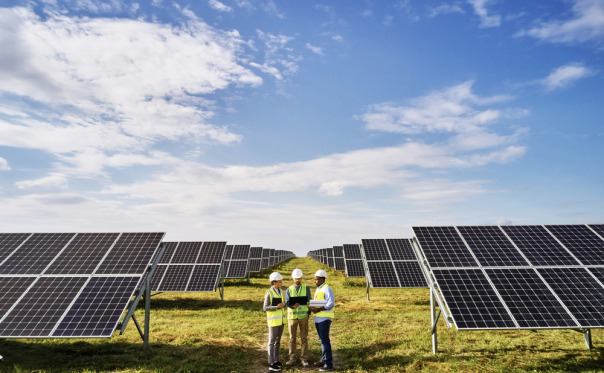
In Australia, the Victoria government detailed a new decarbonisation plan yesterday (21 August), with the aim of introducing around 7.6GW of rooftop solar PV generation by 2035.
The Cheaper, Cleaner, Renewable: Our Plan for Victoria’s Electricity Future report outlines the actions the state government is taking to ensure it achieves its renewable energy targets, which include increasing renewable energy in the electricity mix to 65% by 2030 and 95% by 2035. The state currently receives around 38% of its electricity from renewable energy generation.
Try Premium for just $1
- Full premium access for the first month at only $1
- Converts to an annual rate after 30 days unless cancelled
- Cancel anytime during the trial period
Premium Benefits
- Expert industry analysis and interviews
- Digital access to PV Tech Power journal
- Exclusive event discounts
Or get the full Premium subscription right away
Or continue reading this article for free
Solar PV generation is heavily featured in the state’s plans to decarbonise. Indeed, it targets installing around 7.6GW of additional rooftop solar PV capacity by 2035. This is broken down into 6.3GW of rooftop PV, whereas 1.2GW will comprise “large distributed solar” of up to 30MW.
Victoria’s rooftop solar PV market continues to grow, aided by the state’s various initiatives bolstering figures among households and businesses.
Perhaps the most noteworthy is the Solar Homes programme, offering a rebate scheme to incentivise rooftop solar PV installations. The Victoria government revealed last week (15 August) that the programme had helped deliver 2GW of solar PV since its inauguration.
Projects delivered by the programme account for 13% of the total renewable energy capacity in the state, and its solar panels have generated a cumulative 6.5GWh of power. Around 330,000 solar PV modules, hot water and solar battery systems have been installed via the rebate scheme.
3GW target for utility-scale solar PV; 6.3GW for energy storage
Alongside rooftop solar PV, the state is also eyeing the opportunity utility-scale renewable energy generation can bring. The report says the state should aim to bring an additional 7.4GW of capacity online by 2035.
This is also broken down into differing technologies. Victoria aims to install 12.7GW of generation capacity, with onshore wind accounting for 9.7GW, and solar contributing 3GW.
Energy storage also features within the report, especially given the ambitious upscaling of variable energy generation the state is proposing. To maintain grid stability and provide flexible services, the state government aims to have at least 6.3GW of energy storage capabilities across Victoria.
Large-scale transmission projects to provide welcome boost to decarbonisation
It should also be noted that Victoria is set to benefit from three large-scale transmission and interconnector projects being developed on the National Electricity Market (NEM). The first project set to be introduced is the Western Renewables Link, which is expected to be brought online in 2027.
The Western Renewables Link is a proposed new 190km overhead high-voltage electricity transmission line that will carry renewable energy from Bulgana in western Victoria to Sydenham in Melbourne’s north-west.
Two years later, in 2029, the government also expects the 1.7GW VNI West, which will bring additional transmission capabilities between Victoria and its neighbour New South Wales, to be brought online. The proposed 500kV double-circuit transmission line will connect the two high-voltage electricity grids.
The final interconnector, the 750MW Marinus Link, connecting Victoria and Tasmania, is expected to see phase one go live in 2030. When fully operational, the link will reach 1.5GW and enable green hydropower to be exported to the mainland grid when needed to reduce the risk of blackouts. Likewise, Tasmania will see increased levels of solar PV in its electricity mix transmitted from the mainland.
Lily D’Ambrosio, Victoria’s minister for energy and resources said that the consolidated plan will ensure community and industry are at the centre of the energy transition.
“We will deliver an affordable, reliable and secure electricity system for all Victorians. We mean business. We’re powering ahead with our big renewable energy build and creating and maintaining the right conditions for renewables investment,” D’Ambrosio added.






